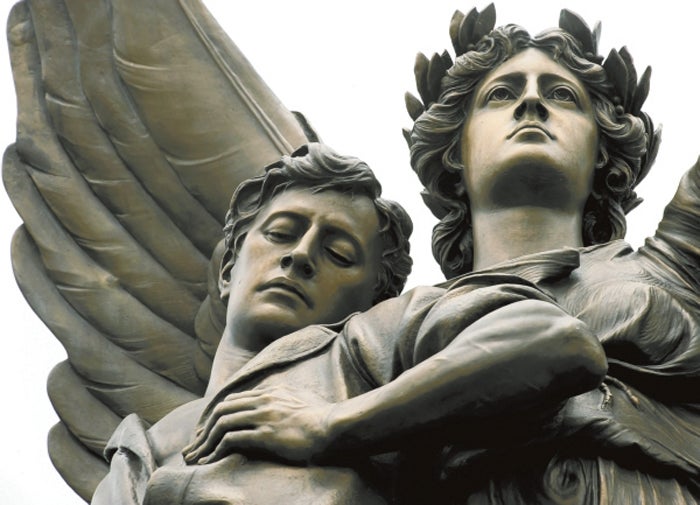Editorial: A conversation we must have
Published 12:00 am Sunday, August 26, 2018

- The Confederate Memorial statue of Fame, the winged muse holding a fallen soldier, was dedicated in 1909 by the Hoke Chapter of the United Daughters of the Confederacy. It was a fundraising project that was a decade in the making. Photo by Jon C. Lakey, Salisbury Post.
The Confederate monument controversy ebbs and flows with increasing frequency in Salisbury. Let’s resolve this debate before Fame suffers a Silent Sam moment and is toppled onto Innes Street.
The owners of the monument, the United Daughters of the Confederacy, should end their silence and, if not take the lead, at least be part of this historic conversation. If Fame is truly a memorial to our war dead, free of the Jim Crow era’s sinister motives, the UDC has a stake in making that point clear to all who see the graceful statue so prominently displayed in downtown Salisbury.
It was the UDC, after all, that took one of Salisbury’s great shames — the Confederate Prison — and transformed it from a repressed memory into a subject to be studied and learned from. During the Civil War, the people of Salisbury carried on with their war-stricken lives, powerless to help as thousands of captured Union soldiers died of starvation and disease behind the prison stockade. The bodies were laid in 17 trenches that are marked in the National Cemetery. Instead of pretending this horror never happened, the UDC now holds a prison symposium each April, aimed at bringing together descendants of guards and prisoners alike.
Likewise, Salisbury’s arts community and historians joined forces several years ago to study the unmarked graves of slaves and freedmen at the corner of Church and Liberty streets. The men and women buried there deserved to be remembered, black and white residents agreed. Ultimately, a beautiful memorial wall went up along its perimeter, inscribed with inspiring quotations from Langston Hughes and others. In the remaining wall that the Oak Grove-Freedman’s Cemetery shares with the all-white Old English cemetery, an opening was created.
An opening is what the debate over the Confederate monument needs now, a means for people to listen to each other’s interpretations of the Confederate monument and find common ground. The figure featured here is not a triumphant general on a horse or an armed sentinel guarding the city; it’s a broken man in tattered clothes, succumbing to the wounds of war.
The statue is not city property, and the easement Salisbury granted to the UDC long ago calls into question the city’s ability to force the issue, as does a state law. Surely UDC members know, though, that this issue will not go away. Show us that you’re not turning a deaf ear to the pain the monument causes in some corners. Reach out to the NAACP, the faith community, local historians and artists to find a creative solution. By modification, addition or removal, secure Fame’s place in Salisbury’s history — and, if possible, our shared future.

